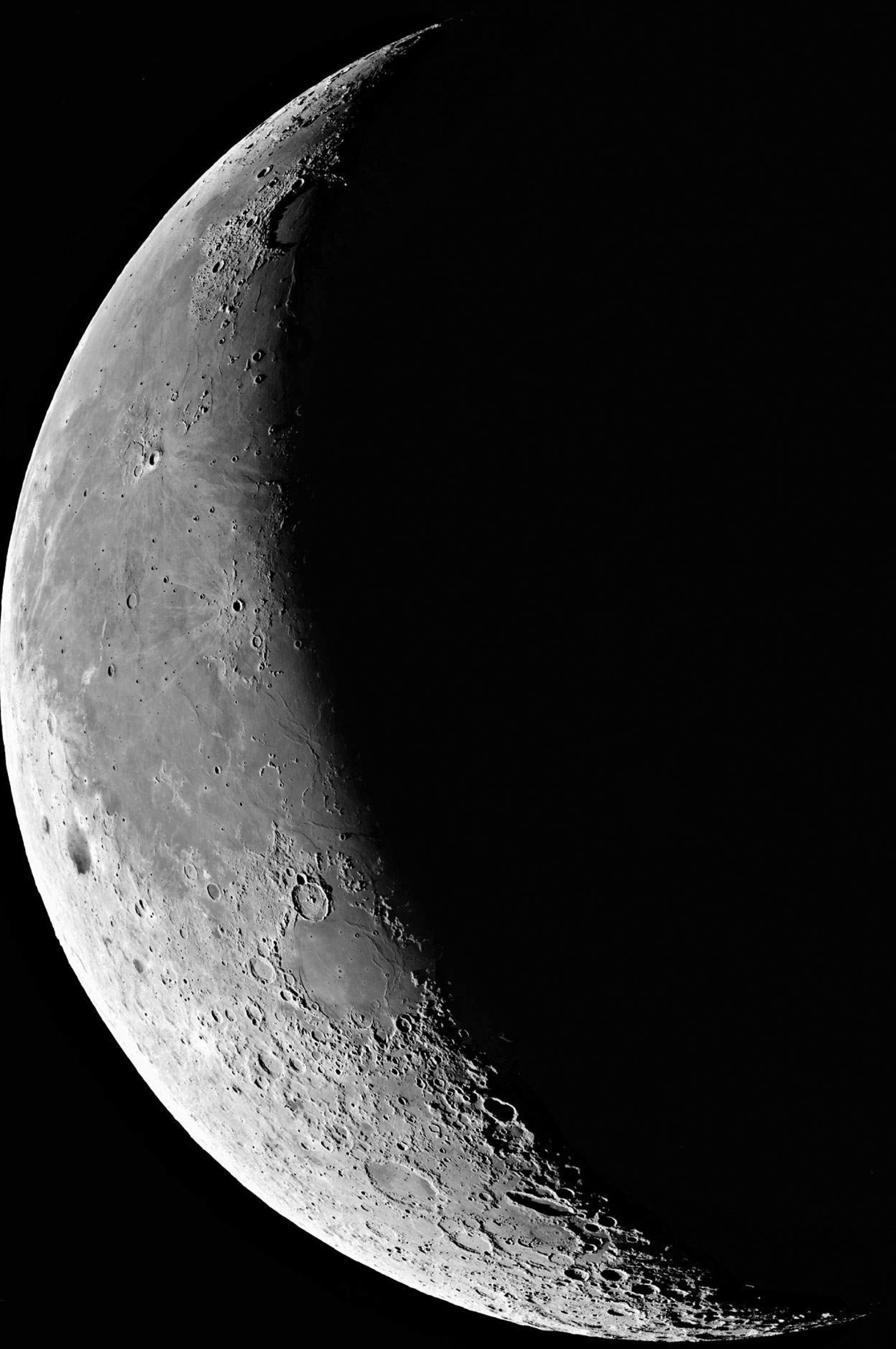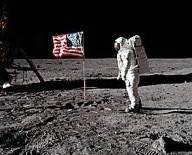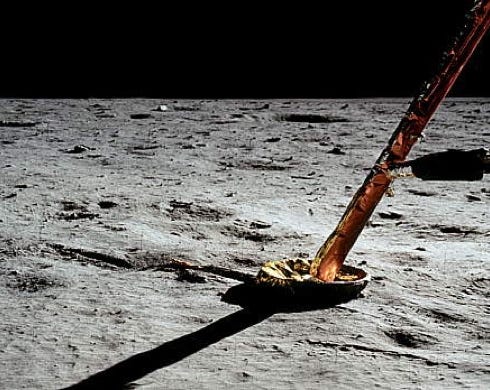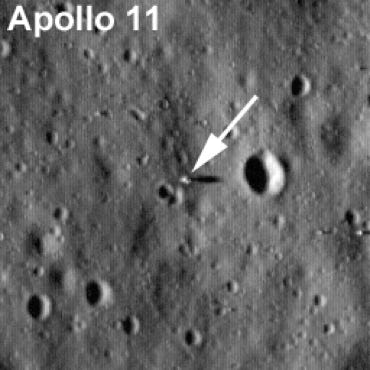

Exploring the Moon
A history of lunar discovery from the first
space probes to recent times
Meeting the challenge
‘Tranquillity Base here. The Eagle has landed.’ With these words Apollo 11 commander Neil Armstrong announced the success of the first manned lunar landing. The time was 20.18 UT on 1969 July 20. (For a video of the final approach and landing, with the view out of the LM window compared with surface features on a Lunar Reconnaissance Orbiter photograph, click here and scroll down the page.)
Around them at their landing site in southwestern Mare Tranquillitatis was a flat, rock-strewn landscape pitted with small craters – in fact, Armstrong had to take over control of the landing from the onboard computer to prevent the LM from descending into such a crater, called West Crater.
Armstrong was the first to climb down the ladder outside the LM, activating a small camera that monitored his movements. As he stepped off the LM, he spoke the now-famous words: ‘That’s one small step for [a] man – one giant leap for mankind.’ Aldrin then joined him on the lunar surface. For the next two hours they set up equipment including a seismometer for measuring Moonquakes and a panel to reflect laser beams back to Earth to measure the changing distance of the Moon with high precision (the Moon is gradually moving away from the Earth).
Moving around in the low lunar gravity, one-sixth that on Earth, proved surprisingly easy, even with bulky spacesuits. Armstrong’s Moon walk lasted two and a quarter hours, Aldrin’s half an hour less. During that time, the two men collected over 20 kg of rocks and soil. On the airless, waterless Moon, their footprints will remain visible in the soil for millions of years, unless disturbed by careless tourists.
Less than 22 hours after touching down on the Moon, Armstrong and Aldrin took off in the upper half of the LM to rejoin Michael Collins orbiting in the Command Module above. (For a video clip of LM takeoff from the final mission of the series, Apollo 17, see here. It’s a 4.7 MB .mpg file and plays for 36 seconds.) Jettisoning Eagle’s ascent stage, Apollo 11 set course back to Earth, splashing down in the Pacific Ocean on July 24.
On their return, the astronauts had to spend over a fortnight in quarantine in case they had brought back any microorganisms from the Moon. But the Moon samples turned out to be completely sterile, and the quarantine procedures were abolished for later missions.
Most astounding of the findings from the Apollo 11 samples was their extreme age, ranging from 3.6 to 3.9 billion years. This is similar to the age of the oldest known rocks on Earth, yet the lunar mare are among the youngest parts of the Moon’s surface, demonstrating how ancient the face of the Moon really is. As expected, the rocks were like basalt lava, indicating that they had once been molten and had flowed out onto the surface from the Moon’s interior. Chemical differences between various samples implied that they had come from at least two different magma sources.
On the surface – one of the Apollo 11 Lunar Module’s legs
Meeting the challenge
Still there –Eagle’s descent stage seen in 2009 by Lunar Reconnaissance Orbiter

